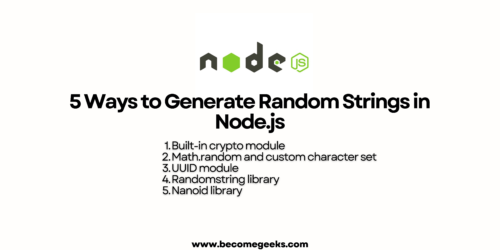Create an npm Package for ChatGPT: A Step-by-Step Guide
In this tutorial, we will explore how to create an npm package that leverages ChatGPT’s capabilities. By packaging ChatGPT functionality into an npm module, developers can easily integrate it into their projects, making it simpler to build chatbots, virtual assistants, or any application that requires natural language processing. ChatGPT is an powerful large language model which is an generative AI capabilities.
Learn more about How ChatGPT works on other post.
Prerequisites: Before we dive into the implementation, make sure you have the following prerequisites in place:
- Basic knowledge of JavaScript and Node.js.
- An OpenAI API key to access the ChatGPT service.
- NodeJs and npm (Node Package Manager) installed on your machine.
Set up a New NodeJs Project:
To get started, create a new directory for your project and initialise it as a NodeJs project by running the following command in your terminal:
$ mkdir chatgpt-npm-package
$ cd chatgpt-npm-package
$ npm init -yInstall Dependencies:
In order to make HTTP requests to the OpenAI API, we’ll need to install the axios package, which is a popular HTTP client for NodeJs. Run the following command in your project directory:
$ npm install axiosImplement ChatGPT Client:
Create a new file called chatgpt.js and define a function that interacts with the ChatGPT API. This function will take user input as a parameter and return the AI’s response. Here’s an example implementation:
// chatgpt.js
const axios = require('axios');
async function chatGPT(message) {
const apiKey = 'YOUR_OPENAI_API_KEY';
const url = 'https://api.openai.com/v1/engines/davinci-codex/completions';
try {
const response = await axios.post(url, {
prompt: message,
max_tokens: 50,
}, {
headers: {
'Content-Type': 'application/json',
'Authorization': `Bearer ${apiKey}`,
},
});
return response.data.choices[0].text.trim();
} catch (error) {
console.error('ChatGPT API request failed:', error);
return 'Sorry, an error occurred.';
}
}
module.exports = chatGPT;Publish as an npm Package:
To make your module accessible via npm, you need to publish it. Follow these steps:
- Create an account on npm (https://www.npmjs.com/signup) if you don’t have one.
- In your terminal, navigate to the root directory of your project.
- Run the following command and follow the prompts:
$ npm loginOnce logged in, run the following command to publish your package:
$ npm publishNote: You can also specify a specific version by using the npm version command before publishing.
Install and Use the Package:
To install your package into another project, navigate to the desired project directory and run:
$ npm install chatgpt-npm-packageIn your project code, you can now import and use the chatGPT function from your npm package:
const chatGPT = require('chatgpt-npm-package');
async function main() {
const userInput = 'Hello, ChatGPT!';
const response = await chatGPT(userInput);
console.log(response);
}
main();In this tutorial, we learned how to create an npm package for ChatGPT. By encapsulating the ChatGPT functionality within a reusable module, you can easily integrate it into various projects. npm packages provide a convenient way to distribute and share your code with the developer community, fostering collaboration and accelerating the development process. With your npm package, you empower other developers to leverage the power of ChatGPT in their own applications, opening up exciting possibilities in the field of conversational AI.






2 Responses